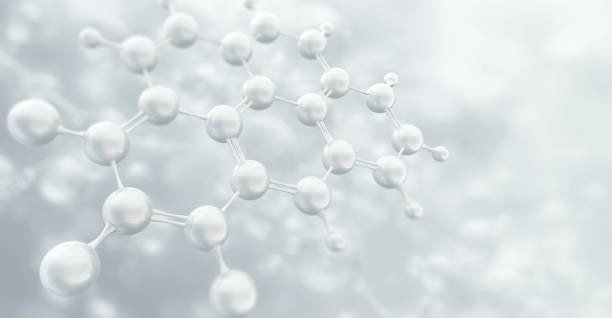Peptides have captured research interest worldwide for their specificity, versatility, and wide range of potential applications. These short chains of amino acids are fundamental messengers in biology—coordinating cellular signaling, hormone regulation, immune responses, tissue repair, and metabolic control.
At Bluewell, we follow the growing body of peptide science with a focus on clarity and rigor. This guide summarizes ten of the most actively studied peptide research areas, reflecting peer-reviewed literature and ongoing investigations.
Important Note: This article discusses research findings for educational purposes. All Bluewell peptides are intended for research use only and are not intended for human consumption or medical use.
Why Peptides Are Remarkable Research Tools
Peptides are small enough to interact precisely with cellular receptors yet large enough to produce targeted biological actions. Their specificity, tunability (via chemical modification), and compatibility with endogenous pathways make them highly informative in preclinical and clinical research models.
1) Muscle Growth & Development
Research focus: GH axis modulation, muscle protein synthesis, recovery
Key findings reported in research:
- Growth hormone–releasing peptides (GHRPs) can increase pulsatile GH, which secondarily elevates IGF-1—mechanisms associated with muscle protein synthesis and recovery.
- Studies note improved markers of muscle repair after exercise-induced stress.
- Cellular data show enhanced translation signaling (e.g., mTOR/AKT pathways) in some models.
Commonly studied peptides:
- GHRP-6, GHRP-2 – classic GH secretagogues
- Ipamorelin – selective GH secretagogue with a “clean” receptor profile
- CJC-1295 / MOD GRF 1-29 – GHRH analogs for sustained or pulsed GH release
- IGF-1 / IGF-1 LR3 – growth factor axis studied for hypertrophy and repair
Evidence note: Mixture of preclinical, mechanistic, and human data depending on compound; protocols and endpoints vary.
2) Anti-Aging & Longevity
Research focus: Cellular maintenance, collagen synthesis, mitochondrial function
Key findings reported in research:
- Some peptides increase collagen production and dermal thickness in models of skin aging.
- Mitochondrial-targeted peptides may support cellular energy and stress tolerance (preclinical).
- Nootropic and circadian-modulating peptides are under investigation for healthy aging.
Representative research areas:
- Collagen peptides – skin structure and hydration
- GHK-Cu – tissue repair, extracellular matrix support
- Epitalon – circadian and telomere biology (preclinical/human small studies)
- Thymosin Alpha-1 – immune modulation relevant to immune aging
Evidence note: Robust cosmetic dermatology data exist for collagen peptides; other longevity claims remain early and variable.
3) Metabolic Function & Weight Management
Research focus: Energy balance, glycemic control, appetite/satiety
Key findings reported in research:
- Incretin-based peptides improve glycemic markers and reduce body weight in clinical studies.
- Some peptides increase fat oxidation and influence energy expenditure in preclinical models.
Commonly studied peptides:
- Tirzepatide – dual GIP/GLP-1 receptor agonist (significant HbA1c and weight effects in trials)
- Semaglutide analogues – GLP-1 RA research for appetite/satiety and glycemic control
- Retatrutide – triple agonist (GLP-1/GIP/glucagon) under investigation for weight and metabolic endpoints
- Tesamorelin – studied for visceral adiposity reduction in specific populations
- MOTS-c – mitochondrial peptide studied for metabolic regulation (preclinical/early human)
Evidence note: Incretin agonists have strong clinical evidence in T2D/obesity; others range from preclinical to targeted clinical contexts.
4) Cognitive Enhancement & Brain Health
Research focus: Neuroprotection, neuroplasticity, cognition
Key findings reported in research:
- Select peptides cross the blood-brain barrier and may modulate neurotrophic signaling.
- Studies report improved memory metrics and synaptic plasticity in preclinical models.
Representative research areas:
- Cerebrolysin – neuroplasticity and recovery (mixed evidence; specific indications studied)
- Dihexa – HGF/c-Met pathway engagement (primarily preclinical)
- SEMAX / Selank – cognition and anxiolysis (human data largely from non-Western programs)
- Noopept – neuroprotective signaling in preclinical/limited clinical settings
- NSI-189 – neurogenesis; mixed clinical outcomes
Evidence note: Many cognitive claims remain early-stage or context-specific; methodologies and endpoints vary widely.
5) Recovery & Tissue Repair
Research focus: Wound healing, connective tissue integrity, inflammation modulation
Key findings reported in research:
- Accelerated wound closure and enhanced angiogenesis reported in animal models.
- Improved markers of tendon/ligament repair and reduced inflammatory signaling in preclinical settings.
Commonly studied peptides:
- BPC-157 – GI lining, tendon/ligament, and soft-tissue repair (primarily preclinical; some case reports)
- TB-500 (Thymosin Beta-4 fragment) – cytoskeletal remodeling and healing
- IGF-1 – growth factor axis relevant to regeneration
- Pentosan polysulfate – joint and cartilage research applications
Evidence note: Strong preclinical signals; human data are heterogeneous and indication-dependent.
6) Sleep Quality & Circadian Rhythm
Research focus: Sleep architecture, circadian entrainment, restorative sleep
Key findings reported in research:
- Some peptides correlate with improved sleep onset/maintenance in exploratory studies.
- GH-axis peptides may indirectly enhance slow-wave sleep architecture.
Representative areas:
- DSIP – classical sleep research peptide (evidence mixed and dated)
- Melatonin-related peptides – circadian phase and sleep timing
- GH secretagogues (e.g., Ipamorelin) – sleep quality reports in some studies
- Orexin pathway modulators – wake drive and sleep balance (primarily small molecules; peptide interest emerging)
Evidence note: Sleep outcomes vary by model; standardized, controlled human data are limited for most peptides.
7) Immune Support & Modulation
Research focus: Immune cell signaling, resilience, inflammatory balance
Key findings reported in research:
- Enhanced T-cell function and balanced cytokine profiles reported for some peptides.
- Antimicrobial peptides studied for innate defense mechanisms.
Commonly studied peptides:
- Thymosin Alpha-1 – T-cell function and immune resilience (various clinical and translational studies)
- Host defense peptides (AMPs) – antimicrobial and immunomodulatory actions
- Transfer factor derivatives – immune “education” (heterogeneous literature)
Evidence note: Immune outcomes are indication-specific; results vary with population and protocol.
8) Cardiovascular & Vascular Function
Research focus: Cardiac performance, endothelial health, fluid balance
Key findings reported in research:
- Natriuretic peptides and angiotensin-related pathways inform hemodynamics and vascular tone.
- Some peptides show endothelial support and vasodilatory effects in models.
Representative areas:
- Natriuretic peptides – fluid balance and cardiac workload
- Angiotensin-modulating research – vascular tone and remodeling
- Endothelial function – nitric-oxide–linked pathways
Evidence note: Much here is mechanistic/physiology research; translational applications vary by indication.
9) Bone Health & Density
Research focus: Osteogenesis, remodeling, mineralization
Key findings reported in research:
- Enhanced bone formation markers and mineral density in specific contexts.
- Improved calcium handling and osteoblast activity in preclinical models.
Representative areas:
- Teriparatide (PTH 1-34) – robust clinical evidence for bone formation in approved settings
- Calcitonin-related peptides – bone metabolism regulation
- Osteogenic peptides / PTH fragments – remodeling research
Evidence note: Teriparatide is well-studied clinically; others vary from mechanistic to translational studies.
10) Skin Health & Dermatology
Research focus: Collagen dynamics, barrier function, wound repair
Key findings reported in research:
- Increased dermal collagen and improved skin elasticity/hydration in cosmetic/dermatologic studies.
- Accelerated wound healing and enhanced extracellular matrix integrity in preclinical/clinical contexts.
Commonly studied peptides:
- GHK-Cu (copper peptides) – skin repair, anti-inflammatory activity
- Palmitoylated matrikines (e.g., Matrixyl family) – collagen/ECM signaling
- Antimicrobial peptides – skin microbiome and defense
Evidence note: Dermatology/cosmetic science contains numerous controlled studies; outcomes depend on formulation and protocol.
The Future of Peptide Research
Emerging directions
- Precision medicine: aligning peptide targets with genetic/omic profiles
- Combination/stacking strategies: pathway synergy while reducing single-agent dosing
- Advanced delivery: oral, transdermal, depot, and targeted carriers (e.g., nanoparticles)
- Biomarker-led protocols: more sensitive readouts for mechanistic studies
- AI/ML discovery: faster design–test cycles and property optimization
Technology advancements
- Improved solid-phase synthesis and recombinant production
- Analytical rigor (LC-MS, NMR) for identity, purity, and stability
- Smarter formulations (PEGylation, lipidation, acylation) to extend half-life and bioavailability
Understanding Research Methods & Quality
Methodologies:
- In vitro (cellular assays), in vivo (animal models), clinical trials, biochemical analyses, and longitudinal designs.
Quality signals:
- Peer-reviewed publications, reproducibility across labs, proper controls and statistics, protocol transparency, and multi-center collaboration.
Why Choose Bluewell for Peptide Research
Our commitment:
- Quality assurance: Batch-level identity, purity, and potency testing
- Comprehensive documentation: Certificates of Analysis (CoAs)
- Technical support: Research-focused assistance
- Global logistics: Reliable delivery to institutions
- Compliance: Products for research use only
Popular research categories:
- Growth & development • Metabolic function • Cognitive & neurological
- Recovery & healing • Anti-aging & longevity
Getting Started with Peptide Research
- Review the literature relevant to your endpoints.
- Design robust protocols with appropriate controls and power.
- Source quality materials with documented purity and identity.
- Consult experts in peptide chemistry/biology as needed.
- Ensure compliance with institutional, ethical, and legal standards.
Conclusion: A Promising Horizon
From metabolic regulation to tissue repair and neurobiology, peptides offer a unique window into complex physiology. The ten areas summarized here are among the most active in modern peptide science—but the field is rapidly expanding, with new mechanisms and delivery strategies emerging every year.
With rigorous methodology, quality materials, and clear endpoints, peptide research can deepen our understanding of biology and inform the next generation of therapeutic strategies.
Disclaimer
This article is for educational and informational purposes only. All peptides referenced are intended for research use only and are not intended for human consumption, medical use, or therapeutic application. Researchers must comply with all applicable laws, regulations, and institutional guidelines.
Selected References
- Wilding JPH et al. NEJM (2021): Once-weekly Semaglutide in adults with overweight/obesity (STEP 1).
- Jastreboff AM et al. NEJM (2022): Tirzepatide once weekly for the treatment of obesity (SURMOUNT-1).
- Frias JP et al. NEJM (2021): Tirzepatide vs Semaglutide in T2D (SURPASS-2).
- Falutz J et al. NEJM (2010): Tesamorelin and visceral adipose tissue in HIV.
- Pickart L et al. J Biomater Sci Polym Ed (2008): GHK-Cu and tissue remodeling (overview).
- Malinda KM et al. FASEB J (1997): Thymosin β4 and angiogenesis/cell migration.
- Zasloff M. Nature (2002): Antimicrobial peptides in innate immunity (review).




